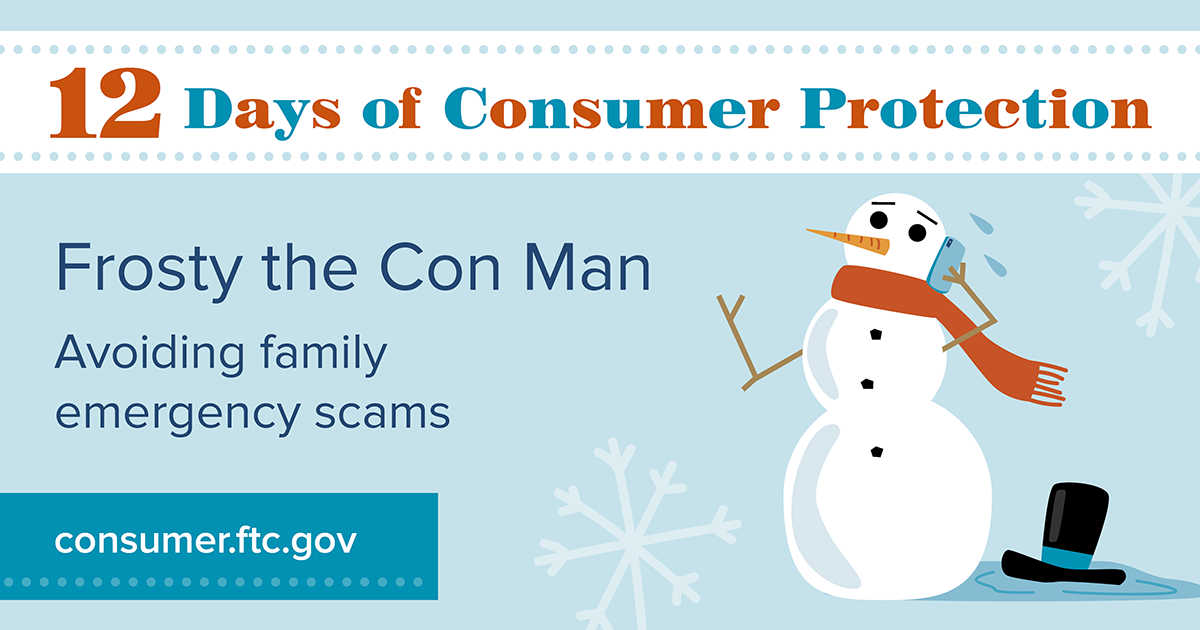December 15, 2020
“Hello? It’s me — Frosty. Look it’s a long story but without my top hat, I’m melting. Please, I need your help — send money now or I’ll be nothing but a puddle!”
OK, so that’s a silly example and real imposters aren’t funny. But, on the 8th day of Consumer Protection, it’s definitely worth remembering that scammers can be really convincing. And they don’t take a break, even at this time of year. It’s surprisingly easy for a scammer to impersonate someone to snow you. Networking sites make it easier than ever to sleuth out personal and family information. And they play on your emotions. Scammers are banking on your love and concern to outweigh your skepticism.
You might get a call or message supposedly from an out-of-town family member or friend claiming to be in an accident, arrested, or hospitalized. To make their story seem legitimate, they may involve another crook who claims to be an authority figure, like a lawyer or police officer.
What do you do if you get a message like this?
- Stop – and check it out. Resist the urge to act immediately, no matter how dramatic the story is.
- Call a phone number for your family member or friend that you know to be genuine. Or reach out to another family member or friend to check out whether what the message claims is true.
- Don’t wire money — or send a check, money order, or gift card by overnight delivery or courier.












